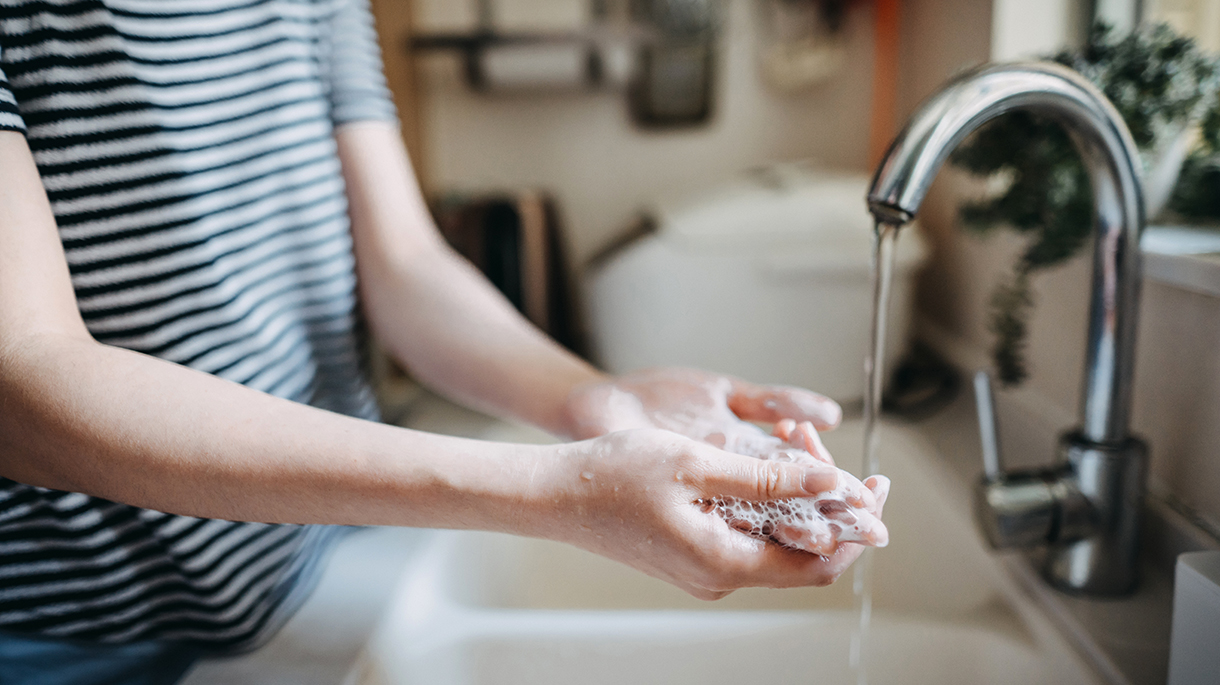
We know infusing may seem complicated at first. With a little practice and tricks to stay on track – like SASH – you can feel confident.
SASH stands for Saline-Administration-Saline-Heparin. It’s an easy way to remember your catheter flushing steps. Flushing means rinsing your catheter before and after each infusion with saline and if needed, heparin. A working catheter helps you infuse your medications successfully and safely.
How to SASH
As you start your infusion at home, think SASH:
- Saline – A saline flush helps make sure your catheter is working before infusing
- Administration – Next, you infuse your medication as directed
- Saline – Another saline flush removes any medication left in your catheter
- Heparin – A heparin flush helps prevent blood clots from forming in your catheter; this may or may not be ordered by your doctor
How to Prepare
Clean your work area with soap and water or disinfecting wipes/spray after each use.
Wash your hands well. For best results, use liquid soap instead of bar soap. If you don’t have soap and water, use an alcohol-based hand sanitizer. For tips on washing your hands properly, read page 8 of the Infusion Patient Resource Guide.
Always clean your hands:
- Before and after you work with your catheter, medication and supplies
- After using the restroom
- After blowing your nose, or covering your mouth and nose when you cough or sneeze
- If they get dirty and, as needed
Get your medication ready. Check your Infusion Patient Resource Guide and medication label. They provide details on how to handle and store your medication.
- Allow refrigerated medication to warm up to room temperature before using it. Don’t place it in hot water, sunlight or a microwave to speed up the process.
- Inspect the medication and label for:
- Correct patient name, drug name, dose and route (intravenous [IV] or subcutaneous
- Expiration date
- Color and consistency (the medication should be clear, consistent in color and free of any visible particles)
How to Flush
For each catheter flush, follow these steps:
1. Remove any air from the saline or heparin syringe. Hold the syringe upright and press firmly on the plunger while the tip cap is still on. Keep pressing until you feel the plunger move. Then, release pressure from the plunger and loosen the tip cap. Push the plunger forward to remove any air. Tighten the cap again before placing the syringe down.
2. Scrub the catheter injection cap with an alcohol pad for 15 seconds. Let it air dry for five seconds. Use a new alcohol pad for each SASH step.
3. Make sure the clamp is open on the IV catheter and/or extension set.
4. Remove the tip cap from the saline or heparin syringe. Attach the syringe to the injection cap by pushing and twisting clockwise until secure. The tip of the syringe is sterile. Do not touch it, or let it touch any surfaces. If this happens, throw away this syringe and use a new saline or heparin syringe.
5. Push in the syringe plunger slowly to flush the catheter. Do not force the flush if you feel resistance. Administer the designated amount of saline or heparin (if ordered).
6. Remove the syringe from the injection cap. Discard the syringe as instructed by your nurse.
We’re here to help you safely care for your catheter. Reach out to your Coram® nurse with any SASH or flushing questions.
Disclaimers
This information is not a substitute for medical advice or treatment. Talk to your doctor or health care provider about your medical condition and prior to starting any new treatment. Coram assumes no liability whatsoever for the information provided or for any diagnosis or treatment made as a result.
Your privacy is important to us. Our employees are trained regarding the appropriate way to handle your private health information.
©2020 Coram, LLC. All rights reserved.
